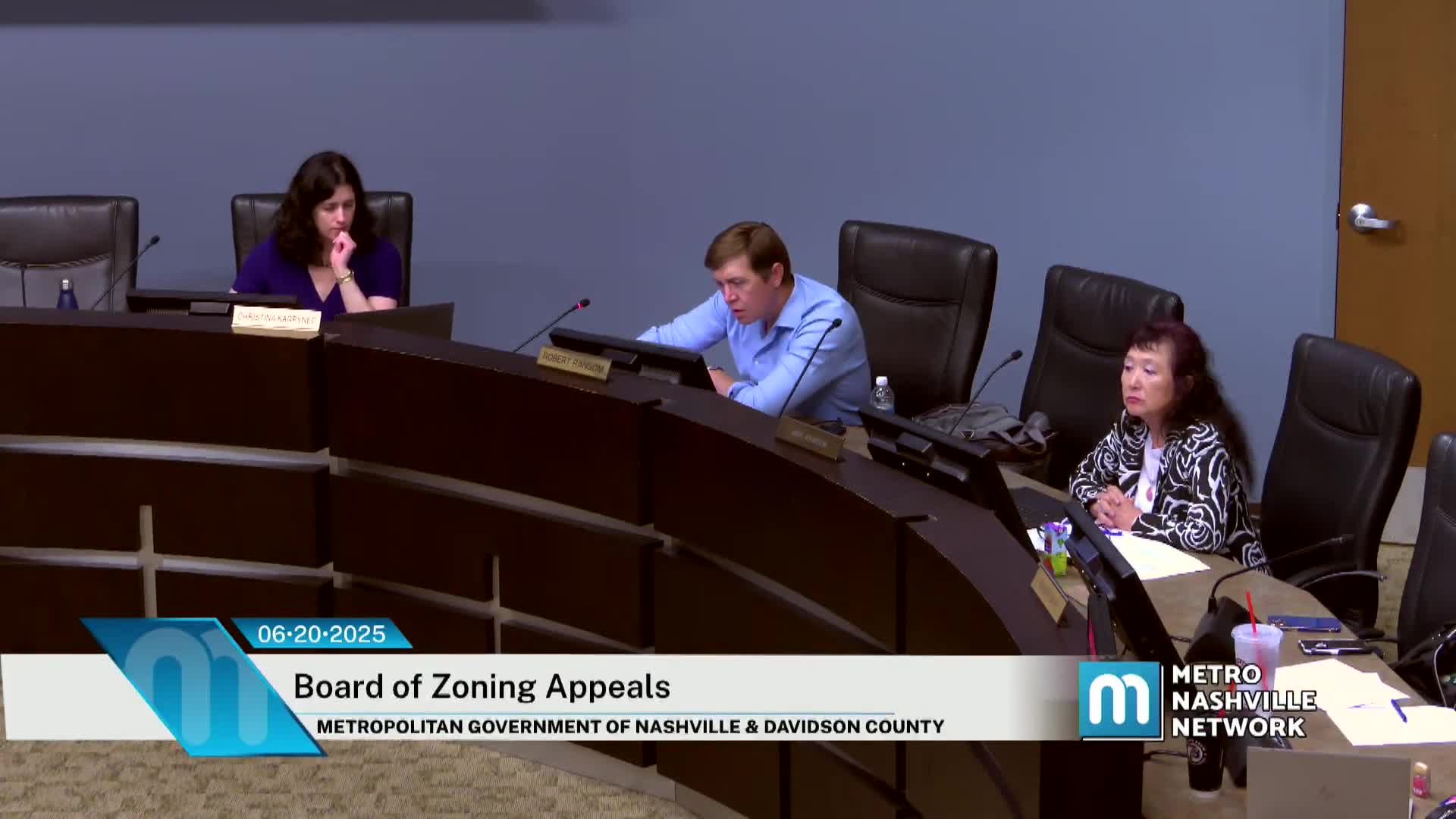Nashville Board Denies 12-foot Variance for Flood Zone Home Construction
June 21, 2025 | Board of Zoning Appeals Meetings, Nashville, Davidson County, Tennessee
This article was created by AI summarizing key points discussed. AI makes mistakes, so for full details and context, please refer to the video of the full meeting. Please report any errors so we can fix them. Report an error »

The Board of Zoning Appeals meeting held on June 20, 2025, in Nashville, Tennessee, focused on a contentious variance request related to a residential property situated in a flood zone. The primary issue at hand was whether to allow the construction of a new home that would require a significant setback variance from the property line due to floodplain regulations.
During the meeting, board members discussed the necessity of elevating the proposed structure to comply with Federal Emergency Management Agency (FEMA) guidelines, which mandate that homes in flood zones be built at least 18 inches above the 100-year flood elevation. The applicant's engineer indicated that the first floor of the new home would need to be approximately four feet above ground level, raising concerns about the height and visibility of the structure in relation to neighboring homes.
Several board members expressed apprehension regarding the potential impact of the proposed home on the surrounding neighborhood, particularly its height and proximity to adjacent properties. One member noted that the new structure could loom over neighboring houses, which could alter the character of the area. The discussion highlighted the need to balance the applicant's hardship against the potential negative effects on neighboring properties.
The zoning administrator clarified that while construction in the floodway is prohibited, building in the floodplain is allowed if certain conditions are met, including maintaining a foot above flood elevation. However, the board grappled with the implications of granting a variance that would allow the house to be positioned significantly closer to the street than neighboring homes.
Ultimately, the board members reached a consensus that while a variance was warranted due to the unique challenges posed by the floodway, the request for a 12-foot variance was excessive. Several members indicated they would support a more modest variance of around six feet, which they believed would better align with the neighborhood's existing structures.
The meeting concluded with a vote, where the majority of board members expressed their intent to deny the variance as presented, emphasizing the need for a more narrowly tailored request that would consider the context of the surrounding area. The applicant was encouraged to revise their proposal to better fit within the established neighborhood standards while still addressing the floodplain requirements.
During the meeting, board members discussed the necessity of elevating the proposed structure to comply with Federal Emergency Management Agency (FEMA) guidelines, which mandate that homes in flood zones be built at least 18 inches above the 100-year flood elevation. The applicant's engineer indicated that the first floor of the new home would need to be approximately four feet above ground level, raising concerns about the height and visibility of the structure in relation to neighboring homes.
Several board members expressed apprehension regarding the potential impact of the proposed home on the surrounding neighborhood, particularly its height and proximity to adjacent properties. One member noted that the new structure could loom over neighboring houses, which could alter the character of the area. The discussion highlighted the need to balance the applicant's hardship against the potential negative effects on neighboring properties.
The zoning administrator clarified that while construction in the floodway is prohibited, building in the floodplain is allowed if certain conditions are met, including maintaining a foot above flood elevation. However, the board grappled with the implications of granting a variance that would allow the house to be positioned significantly closer to the street than neighboring homes.
Ultimately, the board members reached a consensus that while a variance was warranted due to the unique challenges posed by the floodway, the request for a 12-foot variance was excessive. Several members indicated they would support a more modest variance of around six feet, which they believed would better align with the neighborhood's existing structures.
The meeting concluded with a vote, where the majority of board members expressed their intent to deny the variance as presented, emphasizing the need for a more narrowly tailored request that would consider the context of the surrounding area. The applicant was encouraged to revise their proposal to better fit within the established neighborhood standards while still addressing the floodplain requirements.
View full meeting
This article is based on a recent meeting—watch the full video and explore the complete transcript for deeper insights into the discussion.
View full meeting
